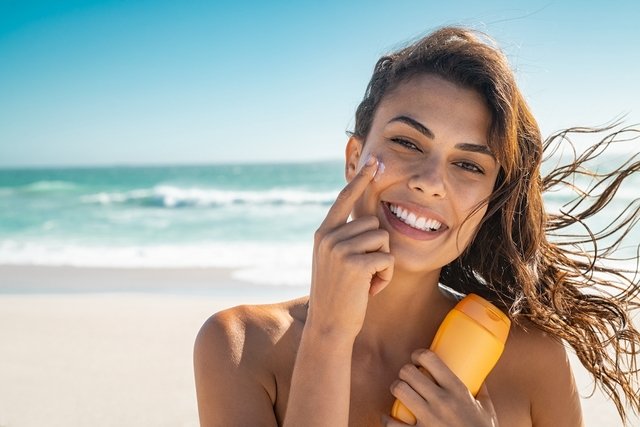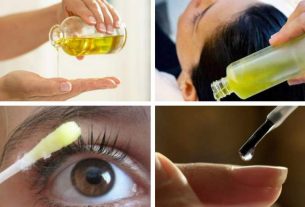The sun protection factor (SPF) should preferably be 50, however, darker people can use a lower index, because darker skin provides greater protection compared to those with lighter skin.
Sunscreen is a cosmetic product indicated to reduce damage to cells that can be caused by ultraviolet (UV) radiation from the sun, and in this way prevent premature skin aging, blemishes, sunburn and skin cancer.
To ensure skin protection against UV rays, it is also important to apply sunscreen correctly, reapply when necessary, in addition to choosing sunscreen according to your skin type, which can be advised by your dermatologist.

Which sunscreen to choose
Although it is recommended to use sunscreen with a protection index of 50, darker skin types can safely use lower levels, as indicated in the table:
An important information that must be observed on the sunscreen label is the protection against type A and B ultraviolet rays (UVA and UVB).
UVB protection guarantees protection against sunburn, while UVA protection guarantees protection against premature aging and skin cancer.
Furthermore, for greater skin protection, you can also use a drinkable sunscreen or take supplements with carotenes and antioxidants, which help, together with sunscreen, to protect the skin from damage caused by the sun.
What is it for
Sunscreen is recommended to avoid:
- Premature skin aging;
- Burns;
- Spots on the skin;
- Precancerous lesions;
- Skin cancer;
- Immunosuppression.
Sunscreen works by blocking, reflecting or dispersing sunlight, preventing skin damage caused by the sun’s UVA and UVB rays.
Despite protecting the skin against the harmful effects of the sun, sunscreen reduces the ability to produce vitamin D.
Therefore, for adequate production of vitamin D, it is recommended to sunbathe for at least 15 minutes before 10 am and after 4 pm, without using sunscreen. See how to ensure vitamin D in the body.
How to apply sunscreen correctly
To use sunscreen, you must take some precautions, such as:
- Use sunscreen dailyeven on cloudy and less hot days;
- Apply sunscreen to still dry skinat least 15 to 30 minutes before sun exposure;
- Apply sunscreen every 2 hours or immediately after entering water or sweating;
- Choosing a specific sunscreen for skin tone;
- Also use lip balm and a sunscreen suitable for the face;
- Apply the protector evenly over the entire bodyalso covering the feet and ears;
- Avoid being directly exposed to the sun for a long time and at the hottest time.
Other important precautions to protect yourself from the sun are to stay under an umbrella, wear sunglasses and a hat with wide brims and avoid sun exposure in the hottest hours, between 10:00 am and 4:00 pm.
Care before using sunscreen
Before using a sunscreen for the first time, you should do a small test to find out if your body is allergic to the product. See what the symptoms of sunscreen allergy are and what to do.
To do this, you can apply a small amount behind the ear, leaving it to act for around 12 hours, to see if the skin reacts to the product. If no reaction occurs, it means it can be applied to the entire body.
Also watch the following video about sun protection and check out these and other tips:
Beauty products with sun protection
Many beauty products, such as creams and makeup, have sun protection in their composition, helping with skin care.
Furthermore, there are products that are also enriched with substances that prevent the appearance of wrinkles and blemishes on the skin, such as vitamins A, C, D and collagen.
However, even if beauty products have a sun protection factor, it is important to apply sunscreen daily, before applying makeup or using creams.
This is because the amount of makeup or creams applied to the skin is very little, not guaranteeing adequate protection of the skin. Therefore, it is recommended to use sunscreen with an SPF suitable for your skin type daily and then apply a beauty product.
Foods that protect the skin
Foods that help protect the skin are those rich in carotenoids, as they stimulate the production of melanin, a substance that gives color to the skin and provides protection against the sun’s rays.
The main foods rich in carotenoids are:
- Acerola;
- Manga;
- Melon;
- Tomato or tomato sauce;
- Guava;
- Pumpkin;
- Cabbage.
These foods should be eaten daily to prolong your tan and protect your skin. See more foods rich in beta-carotene.
In addition to helping the skin, carotenoids are antioxidants that also strengthen the immune system and prevent diseases such as cancer.
The following video provides tips for prolonging the effect of your tan:

Sign up for our newsletter and stay up to date with exclusive news
that can transform your routine!
Warning: Undefined array key "title" in /home/storelat/public_html/wp-content/plugins/link-whisper-premium/templates/frontend/related-posts.php on line 12
Warning: Undefined array key "title_tag" in /home/storelat/public_html/wp-content/plugins/link-whisper-premium/templates/frontend/related-posts.php on line 13



